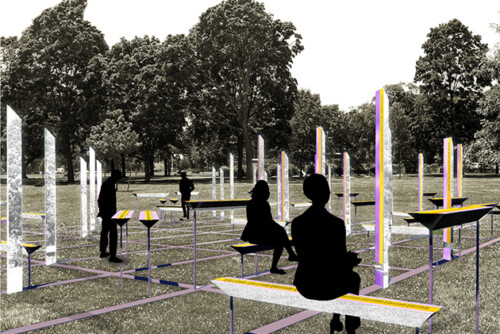Ten years ago, I was trying to decide how to replot my life after Columbia decided that it would not be a part of my future. I had decided to write the second dissertation that would qualify me to be a professor of American Studies in Germany, but hadn’t yet settled on a subject for this new project. Carolyn suggested vigorously that I work on Nathaniel Hawthorne. This puzzled me. Yes, I understood, given our history, the wisdom of working on a canonical, nineteenth-century, male novelist who was not Henry James (I seem to remember that she told me to “cover [my] ass”). But why Hawthorne? Although I appreciated this advice, I did not go with it, and ended up writing, as always, about Henry James.
But the story of Carolyn’s advice doesn’t end there. Now, ten years later and having survived the rite de passage that qualifies me to be a professor of American Studies in Germany, I am again being admonished (by a friend and mentor who, in her wonderfully relentless, opinionated, and inexplicable championing of my career has always reminded me of Carolyn) to work on Nathaniel Hawthorne, that canonical, nineteenth-century male novelist who was not Henry James.
And this time ’round, I’m heeding the advice. I wish Carolyn were here to appreciate the irony, and I wish I could ask her why, exactly, she had suggested this coupling in the first place. At the time, I hadn’t read Hawthorne recently enough – or ever, to be honest, with enough interest – even to consider such a project. And now that I am, as they put it, “working on Hawthorne” without entirely understanding, beyond its strategic relevance, why, I’d love to know what Carolyn saw in this juxtaposition.
Either Carolyn would help me to understand something about myself by elucidating a relation to Hawthorne that continues to elude me, or she would help me to understand something about herself, about her way of seeing and interacting with the world, that would help me, in turn, to elucidate some things about Carolyn that continue to elude me. In her absence, Hawthorne – or, more precisely, Carolyn’s puzzling reading of The Scarlet Letter – suggests something I/we might have missed about how she construed her interactions with her world.
In Writing a Woman’s Life, Carolyn comments on The Scarlet Letter as follows:
[Hester Prynne] had lived through her special destiny but left no path behind for future women, had lived with no community of women, no sense of bonding with other women. Not only had [she] no stories other than [her] refusal of the plot in which most women lived, and no women with whom to talk of what [she] had [herself] learned, but [she] would have been hard put to answer the inevitable question asked of unhappy women: “What do you want?” (43)
This passage sent me back to the end of The Scarlet Letter, where I read that, upon her voluntary return to New England, Hester Prynne finds “toilsome, thoughtful, and self-devoted” fulfillment at the center of a community of women:
… people brought their sorrows and perplexities, and besought her counsel, as one who had herself gone through a mighty trouble. Women, more especially, – in the continually recurring trials of wounded, wasted, wronged, misplaced, or erring and sinful passion, – or with the dread burden of a heart unyielded, because unvalued and unsought, – came to Hester’s cottage, demanding why they were so wretched, and what the remedy! Hester comforted and counselled them, as best she might. She assured them, too, of her firm belief that, at some brighter period, when the world should have been ripe for it, in Heaven’s own time, a new truth would be revealed, in order to establish the whole relation between man and woman on a surer ground of mutual happiness. (344)
Hawthorne’s account of Hester’s profession recalls one’s own endless office hours, their frustrations and deep satisfactions. Her vision of a “new truth” that would “establish the whole relation between man and woman on a surer ground of mutual happiness” reminds me of the most optimistic moments in Carolyn’s writings. For Hester, as for so many of us teaching Women’s and Feminist Studies in hostile surroundings, it often seems that solace in the present and faith in a better future are all we have to offer those who seek our “comfort and counsel.” But haven’t we also set our sights on – and, to some extent, realized – a “brighter period,” when the intellectual and political passions that seemed “wounded, wasted, wronged, misplaced, or erring and sinful” in the institutional context of 1980s and early 90s have achieved a platform, and sometimes even a mandate?


